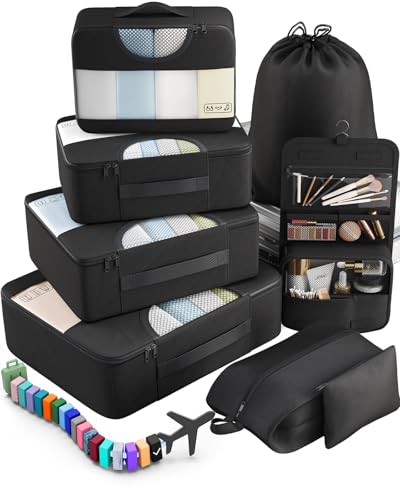In Mozambique, they use Type C, F, and M power plugs and outlets. The voltage is 220V, and the frequency is 50Hz.
So, you’ll need a travel adapter in Mozambique. Their plugs and outlets are different from the Type A and B ones we use back in the States.
Quick Overview of the Plugs in Mozambique:
- Plug type in Mozambique: C, F, and M
- Standard voltage: 220V
- Frequency: 50Hz
- Need a travel adapter? Yes, you do need a travel adapter
- Need a voltage converter? Most devices won’t need one — some might
- Recommended plug adapter: Vintar Universal Travel Adapter Kit
This information is gathered from local electricity agencies, IEC standards, and the experiences of travelers who’ve used these outlets abroad.
The Only Travel Adapter You’ll Need in Mozambique
Traveling to Mozambique? You’ll need the right adapter to keep your devices powered up. We don’t sell them, but we’ve done the research so you don’t have to. Here’s the best one:
Recommended Travel Plug Adapter
by 1,000+ travelers on Amazon
Already out there and forgot your power adapter? You’ll most likely be fine—there are usually options around. But next time, packing your own saves you the trouble and ensures you’ve got something reliable.
People visiting Mozambique often also travel to Zimbabwe, Malawi, and South Africa. Be sure to check what kind of plugs these countries use.
Power Outlets in Mozambique
In Mozambique, they use Type C, F, and M power plugs and outlets.
Type C

Type C outlets have two round prongs and no grounding pin. Type E and F plugs usually fit too, but grounded plugs will need an adapter.
Type F

Type M

Type M outlets have three large round prongs like Type D but spaced farther apart, designed for high-power appliances, and only accept Type M plugs—Type C may fit, but it’s unsafe and not recommended.
Do You Need a Voltage Converter?
You’ll probably need a voltage converter in Mozambique since your device’s voltage has to match the local power supply. In the U.S., we use 120V, but Mozambique operates on a different voltage, so a converter is required.
Before using your electronics in another country, always check the voltage label to make sure it’s compatible. If it states “100-240V, 50/60 Hz”, your device can handle both 120V and 220-240V without needing a converter. Many modern gadgets, including laptops, tablets, and cameras, support this.

Which Travel Devices May Need a Converter?
Need a reliable voltage converter? These are the top picks according to real reviews — check them out.
| Device | Need Converter? | Notes |
|---|---|---|
| Phone | ❌ No (usually) | Most modern phone chargers are dual voltage (100–240V) |
| Laptop | ❌ No (usually) | Check the power brick label for 100–240V |
| Hairdryer | ✅ Yes (often) | High wattage; many models are not dual voltage |
| Electric toothbrush | ⚠️ Check voltage | Some models are 110V only |
| Camera / DSLR | ❌ No (usually) | Most chargers are dual voltage |
| Power bank | ❌ No | Charges via USB, adapter is enough |
| Electric shaver / trimmer | ⚠️ Check voltage | Older or cheaper models may not support 230V |
| Tablet / iPad | ❌ No | All models are dual voltage |
| Portable fan | ✅ Yes (sometimes) | Many models are not compatible with 230V |
| Game console | ⚠️ Check voltage | Newer consoles like PS5 and Xbox are often dual voltage — check to be sure |
| Bluetooth speaker | ❌ No (usually) | Charges via USB |
| E-reader (Kindle, etc.) | ❌ No | USB charging only, no converter needed |
Top Travel Essentials to Pack
Not everything that’s useful takes up space. These compact items can really pull their weight when you’re on the go.
Digital Luggage Scale
Packing Cubes
Power Bank
More About Mozambique
Mozambique flies under the radar for most travelers, but those who make it here are usually blown away. With over 1,500 miles of Indian Ocean coastline, it’s got everything from wild beaches and coral reefs to remote islands and historic towns. It’s one of the best diving and snorkeling destinations in Africa—if not the world.
The culture’s just as rich as the landscapes. You’ll hear Portuguese, local languages, and reggae beats all blending together in cities and beach towns. The food’s a standout too—especially anything grilled over charcoal and served with a spicy piri-piri kick.
Traveling here takes some planning, and you’ll need to stay informed about safety in certain areas. But for those willing to go a bit off the beaten path, Mozambique offers an authentic, unforgettable experience with warm people and jaw-dropping natural beauty.
Top places to visit in Mozambique: Maputo, Vilankulo, and Bazaruto Archipelago.




